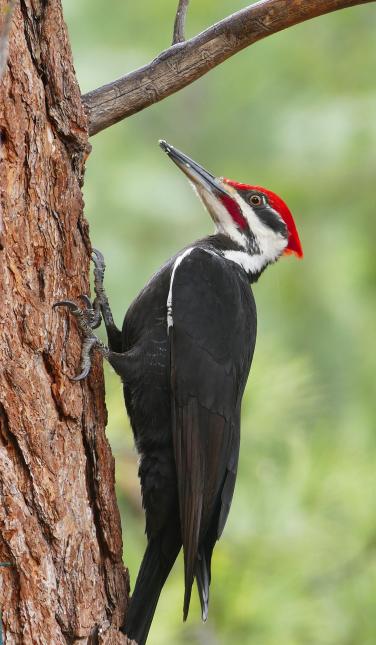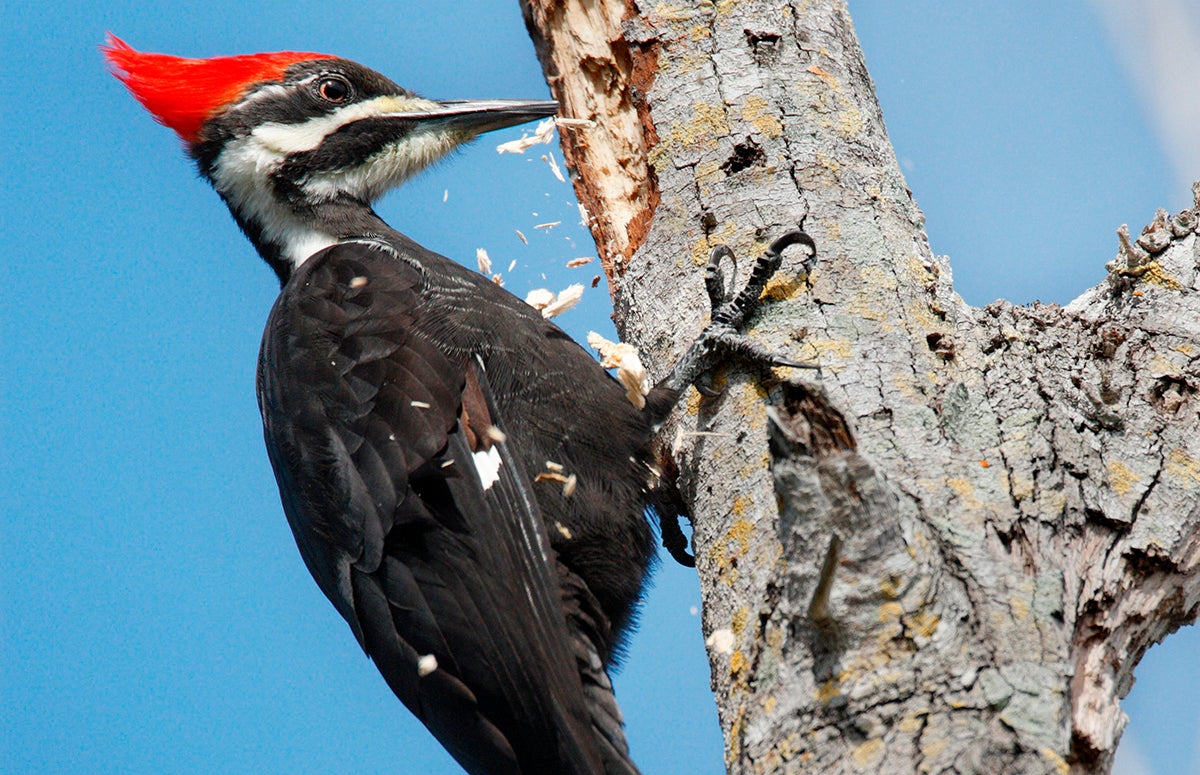Native Woodpeckers in Florida: A Guide to Variety and Behaviors
Native Woodpeckers in Florida: A Guide to Variety and Behaviors
Blog Article
Woodpeckers Unleashed: Exploring the Marvels of These Knowledgeable Tree Climbers
Woodpeckers, with their distinct markings and balanced drumming resembling through wooded areas, hold a distinct place in the bird globe. Their specialized makeup and adjustments enable them to browse upright surface areas with unmatched skill. Their mastery of tree climbing is just one element of their fascinating habits. As we dig into the complex information of woodpeckers' nesting practices, feeding techniques, and the ongoing preservation efforts to shield these remarkable birds, a deeper appreciation for their place in nature unravels.
Composition and Adaptations
When checking out the makeup and adaptations of woodpeckers, one can observe exceptional attributes that allow these birds to flourish in their specialized ecological specific niche. In addition, woodpeckers have zygodactyl feet, with 2 toes dealing with forward and two dealing with backwards, providing a company hold on tree trunks while they browse for food or drum for communication.
In addition, woodpeckers have a distinct tongue framework that is long, barbed, and sticky, allowing them to extract bugs from gaps in wood. This customized adaptation permits woodpeckers to exploit a food resource that is unattainable to many various other bird types. In general, the composition and adjustments of woodpeckers display the impressive evolutionary solutions that have enabled these birds to grow in their arboreal environment.
Drumming Habits
Having actually checked out the composition and adaptations of woodpeckers, the focus currently moves to recognizing their drumming behavior, an unique facet of their communication and territorial display screens. Drumming is an important kind of interaction amongst woodpeckers, serving multiple purposes such as establishing regions, attracting mates, and signaling alarm system. Each woodpecker varieties has an unique drumming pattern that aids individuals recognize participants of their very own species and differentiate them from rivals or predators.
Woodpeckers generate drumming sounds by rapidly pecking on resonant surface areas such as dead trees, energy posts, or also steel items, creating a collection of balanced beats. The intensity and rate of drumming can differ based upon the purpose; as an example, a fast drumming sequence might symbolize hostility in the direction of intruders, while a slower and softer drumming pattern could indicate courtship (Woodpeckers in Florida). Additionally, woodpeckers may readjust the regularity and duration of their drumming to share specific messages properly
Nesting Behaviors
Exploring the nesting behaviors of woodpeckers exposes fascinating insights into their reproductive actions and habitat options. Woodpeckers are understood for their distinct nesting preferences, typically excavating tooth cavities in trees to produce sheltered spaces for increasing their young. These dental caries offer not just as a nesting website however likewise as a safe and secure haven from killers and inclement weather.
Woodpeckers show a high degree of fidelity to their nesting sites, typically going back to the same area every year. This habits highlights the significance of appropriate environment availability for their reproductive success. The selection of a nesting site is vital for woodpeckers, with elements such as tree species, height, and decay stage playing considerable duties in their decision-making procedure.
Surprisingly, some woodpecker varieties are recognized to dig deep into numerous tooth cavities within their area, providing themselves with alternate nesting choices. This approach may act as a form of insurance policy against prospective hazards or disturbances to their key nesting site.

Feeding Methods
Woodpeckers utilize a variety of specialized feeding methods to procure their key food resources. Among the most distinctive feeding behaviors of woodpeckers is drumming, which entails rapid pecking on trees to uncover pests below the bark. This drumming not just helps them situate target but likewise functions as a method of interaction with various other woodpeckers. Woodpeckers have strong, chisel-like beaks that enable them to pierce right into wood easily. Once an top article opening is created, they utilize their lengthy, barbed tongues to extract bugs such as ants, beetles, larvae, and crawlers. These tongues are coated with sticky saliva that helps trap the prey. Woodpeckers are also understood to excavate dental caries in trees to accessibility covert insect larvae or sap. Some species, like the acorn woodpecker, shop nuts in specially developed holes called granaries. This critical keeping of food assists them survive throughout food shortage Learn More periods. Woodpeckers are really exceptional in their feeding strategies, showcasing versatility and intelligence in acquiring their nourishment.
Preservation Efforts
In the middle of the complex feeding strategies showed by woodpeckers, the preservation efforts aimed at protecting these interesting birds play an essential role in preserving their environments and populaces. Woodpeckers encounter numerous threats to their survival, including habitat loss due to logging, climate change modifying their ecological communities, and accidents with manufactured frameworks such as buildings and vehicles - Woodpeckers in Florida. Preservationists are actively functioning to resolve these difficulties and make certain the long-term well-being of woodpecker types

Education and learning and public awareness projects are also vital components of woodpecker conservation initiatives. By elevating recognition regarding the relevance of these birds in maintaining healthy and balanced forest ecological communities, conservationists can amass assistance for environment preservation campaigns and advertise responsible land monitoring methods. With collaborative initiatives between scientists, policymakers, and neighborhood communities, we can work with each other to secure a future where woodpeckers prosper in their natural environments.
Verdict

Report this page